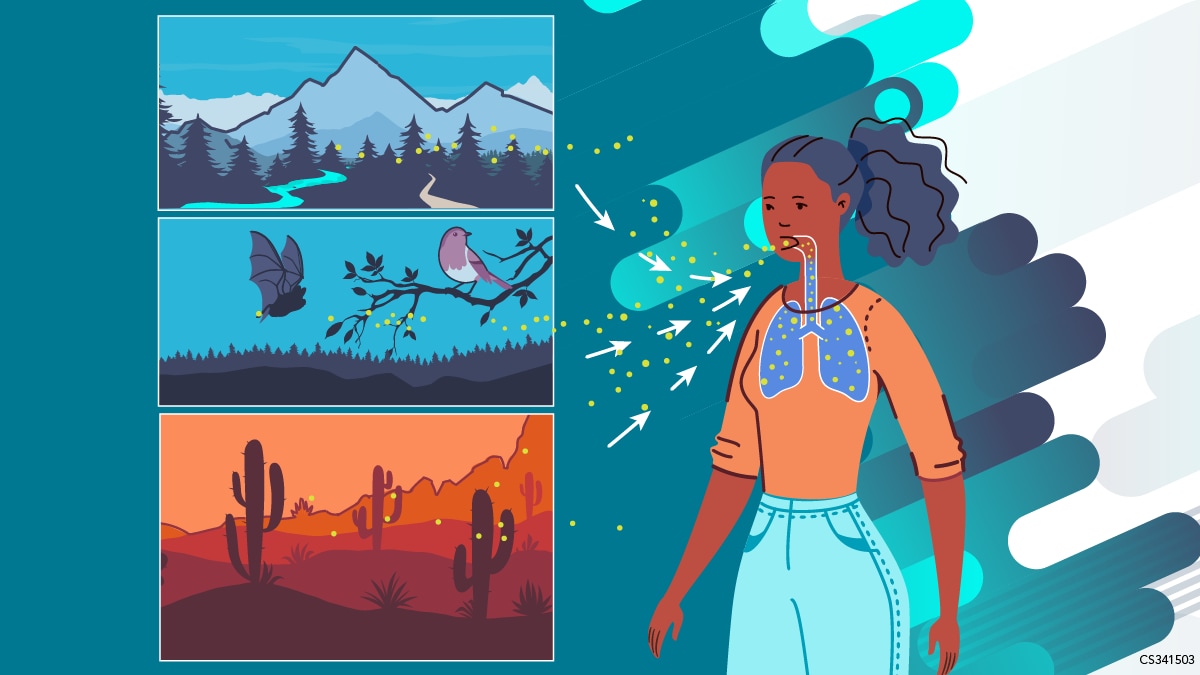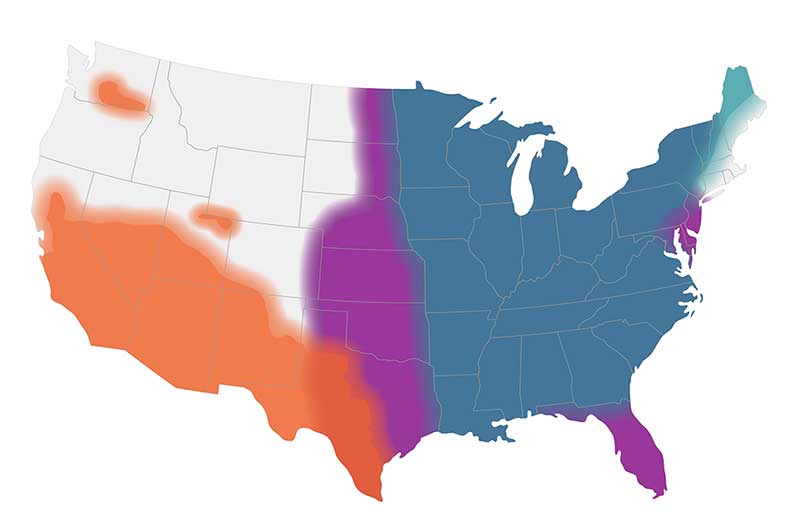At a glance
Coccidioidomycosis (Valley fever), histoplasmosis, and blastomycosis are three types of fungal community-acquired pneumonias (CAP). Each are caused by fungi that live in different parts of the United States, where they are considered endemic. Fungal CAP are often misdiagnosed, delaying treatment when needed. Healthcare providers can use CDC's algorithms to guide testing and treatment for coccidioidomycosis, histoplasmosis, and blastomycosis.

Community-acquired pneumonias
Blastomycosis is a lung infection caused by a fungus that lives in soil in parts of the U.S.
Histoplasma, a fungus in soil, bird, and bat droppings in areas in the U.S., causes lung infections.
Valley fever (coccidioidomycosis) is a lung infection from a fungus in soil in parts of the U.S.
Find 3 clinical algorithms to guide testing and treatment for endemic community-acquired pneumonias.
Health Care Providers:
Testing Algorithms for Fungal Pnuemonias



